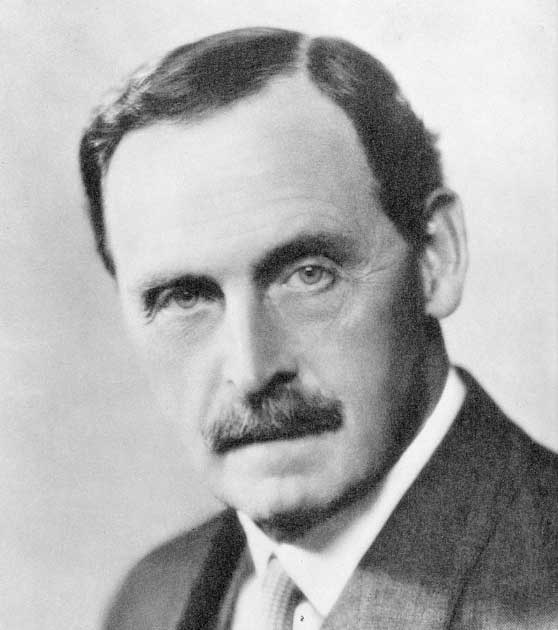A monarch is doing extraordinarily well if they can get through their entire reign without a single scandal. It’s a feat few monarchs or leaders in general rarely achieve.
Upon his death in 1936 King George V of England appeared to be one of these rare monarchs. He was a popular monarch who, in his 26-year reign, seemed to have never really put a foot wrong.
Sadly, many years after his death, King George’s reign was finally marked by controversy. The release of the king’s physician’s diary in 1986 showed that the British people had been lied to as to how their beloved king died.
Who Was King George V?
King George V was the King of the United Kingdom, British Dominions, and the Emperor of India from May 6th, 1910 until 1936, when he died. George was born on the 3rd of June 1865, the second son of Albert Edward, Prince of Wales, and Alexandra, Princess of Wales.
At the time of his birth his grandmother Queen Victoria was still monarch. As he was the third in line to the throne (behind his father and elder brother Prince Albert Victor) it was never expected that George would get a chance to sit on the throne.
Both George and Albert received the best education on offer but proved not to be intellectuals at heart. As such, like many royals before and after them, it was decided both boys should join the Navy. While Albert eventually did go to university, George decided to stick with the Navy.
Everything changed for George with the death of his brother from pneumonia on the 14th of January 1892. He was now the second in line to the throne and it was exceedingly likely that he would one day succeed his father.
George left the Navy and became a “working Royal”. When Queen Victoria died in 1901, George’s father became King Edward VII and George was named the new Prince of Wales. Edward VII reigned until he died in 1910, George succeeded him, becoming King George V.
King George V had a very busy reign which in many ways saw the world order and the British Empire, in particular, turned on its head. George’s reign saw the rise of political movements such as socialism, communism, and fascism in Europe. The British Empire also had to contend with Irish republicanism and the Indian independence movement, both dangers to the English monarchy.
He ruled Britain through the course of WWI and remained a popular monarch despite his family’s German heritage. To keep nationalists happy he became the first monarch of the House of Windsor in 1917, which was a little more British sounding than the House of Saxe-Coburg and Gotha.
He also oversaw the Parliament Act of 1911 which established the supremacy of the democratically elected British House of Commons over the unelected House of Lords. His willingness to make such changes is perhaps part of the reason his monarchy survived while his first cousins Nicholas II of Russia and Wilhelm II of Germany saw theirs fall.

Finally, he appointed the first Labour Ministry in 1924, and with the 1931 Statute of Westminster recognized the separation of his Empire’s dominions, making them independent states under the umbrella of the British Commonwealth.
Through all of this, the British Empire saw a period of growth, peaking territorially in the 1920s. With all these accomplishments under his belt, it is unsurprising he was a popular monarch.
Ill Health
King George V suffered from two major ailments and the late part of his reign was plagued by serious health issues. He was seriously injured on October 28 1915 when he was thrown from his horse during a troop review in France. The stresses of the war and this accident took a long-term toll on his health.
He also smoked heavily which caused repeated breathing problems such as chronic bronchitis. His health was bad enough that in 1925 his doctors sent him (reluctantly) on a recuperative private cruise in the Mediterranean. This proved to be his last ever trip abroad.
This failed to do the trick however and in 1928 he was seriously ill again with septicemia. His recovery took a long time, leading his son, Edward, to take over the family business for two years. In 1929 his doctors once again pushed him to take another recuperative trip abroad but he refused, choosing to spend several months in Bognor Regis.
King George never truly recovered and his lung problems only got worse. His health took one final knock with the death of his favorite sister, Victoria, in 1935. Her loss left him deeply depressed.
The beginning of the end came for King George on January 15th, 1936. He retired to his bedroom at Sandringham House, suffering from what he believed to be a bad cold. He would never leave his room again. Over the following days, he became increasingly weak, struggling to maintain consciousness.
- Casimir IV Jagiellon: A Polish King with a Cursed Tomb?
- Ludwig II of Bavaria: The Tragic Tale of the Swan King
By the 20th of January, it was clear to the King’s doctors that this was the end for George. They released a bulletin that read, “The King’s life is moving peacefully towards its close”.
The King passed away at 11.55 pm and his death was announced in the following morning’s edition of the Times. A myth spread that his final words were “Bugger Bognor” after being told he would soon be well enough to visit his favorite seaside haunt, Bognor Regis.
In truth, it was revealed in 1986 that his last words were, “God damn you!”, aimed at his nurse, Catherine Black, as she was sedating him on his last night. King George hadn’t just drifted off in his sleep, he had been given a helping hand.

The King’s lead physician had been Lord Dawson of Penn, who had been an early supporter of euthanasia under certain circumstances. In Dawson’s diary, the doctor admitted to killing the King.
He claimed that at around 11 o’clock on the king’s last night, it became clear that the king’s death would be a drawn-out, undignified affair over many hours. Dawson hoped to give the king dignity in death by finishing it quickly. He injected George with a heavy dose of morphine and cocaine.
Lord Dawson kept what he had done a secret. Queen Mary, George’s wife, was deeply religious and would never have agreed to euthanasia. The Royals had agreed not to artificially prolong George’s life, but approving euthanasia would have been a step too far.
Regicide?
The release of Dawson’s diary in 1986, years after his death, caused a major stir. The British people had been misled for decades as to how one of their most favored kings had died.
Many people, including the past president of the Royal College of Physicians and George’s official biographer, deemed the doctor’s act “evil’. (Unfounded) questions were also raised about the rest of the Royal family’s guilt.
If the news had broken today, it might have gotten a different reaction. Attitudes towards euthanasia have shifted over the years, with some countries legalizing it under some circumstances. Whether or not one approves of the act or not, it seems clear that Dawson had the king’s best interests at heart.
Top Image: King George V of England in 1933. Source: Arthur Stockdale Cope / Public Domain.